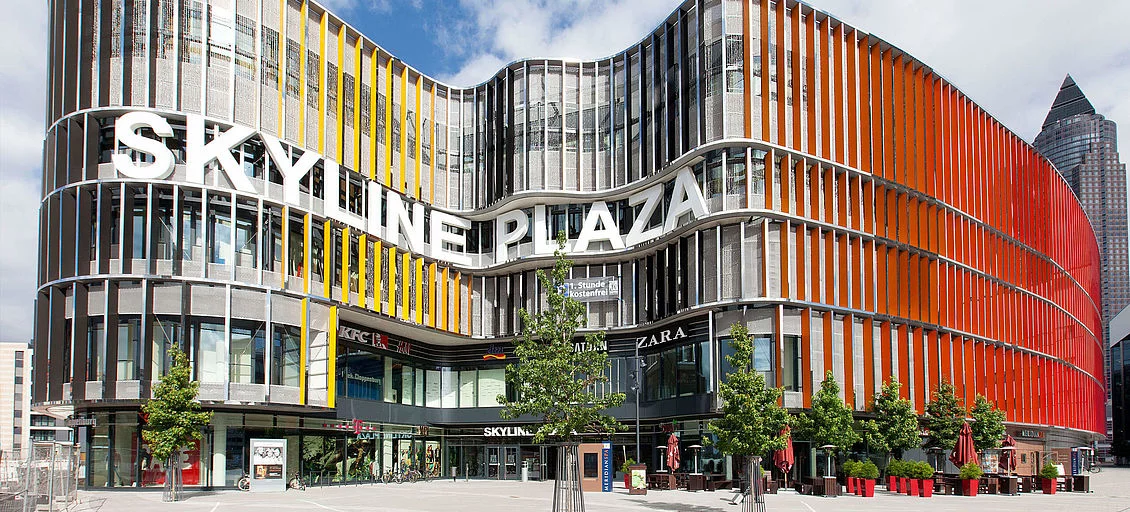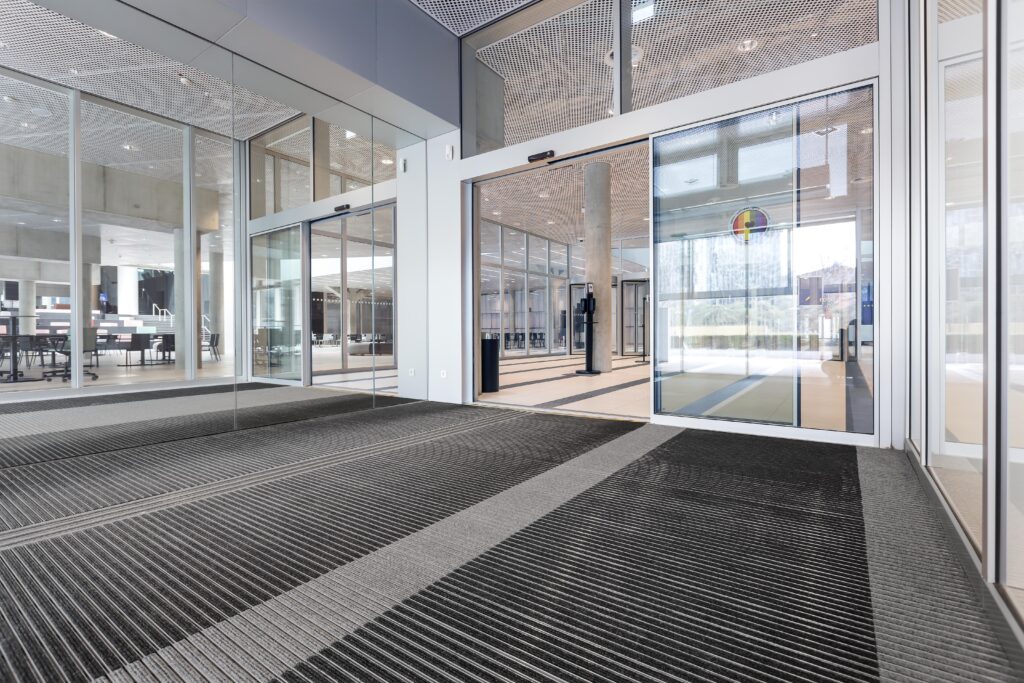Lingen, 27 July 2021 Cleanliness in buildings starts with emco – the leading manufacturer of clean-off systems designed to reduce dirt and moisture. But safety and accessibility are important considerations too when planning a new construction. What exactly does “accessibility” mean in the world of architecture and building? And why is “universal design” so important? – emco Bautechnik discussed these issues with Dirk Michalski (Dipl.-Ing), an architect and expert in accessible planning and building.
emco interview with architect Dirk Michalski
Mr Michalski, what does the term “universal design” actually mean?
For me, the concept of universal design encompasses the design and accessibility of the building. The process starts with the development of an attractive universal design for the largest possible user group, which is then implemented by the various parties involved. The path to the building and access points must be clearly identifiable to allow easy location of features such as doors and entrances for as many people as possible.
What does “accessible” actually mean?
First and foremost, accessible means the elimination of barriers. In other words, I must not design or build any elements that could represent obstacles for some people. Let’s take a simple example: access that requires the use of stairs would not be suitable for a wheelchair user. The stairs would be a barrier. Whereas a barrier for blind people would be a large open space in front of a building with no means of orientation towards the entrance. A feature that assists wheelchair users could potentially represent an obstacle for blind people. We need to weigh up different universal design approaches at the concept stage: What is the best option and one that everyone can use? Are there any mutually exclusive aspects and how can I find the best solution? My experiences with emco entrance mats have been positive so far.
Cost is an important issue for building owners. Does accessible design inevitably mean more expensive?
Any discussion of costs and accessibility must focus above all on comfort and convenience. The starting point is to consider the question: Do we regard accessibility as an “optional extra” in the building design? Or as something that would actually provide greater convenience for many people? Let’s take the example of a lift. A lift is, of course, a relatively cost-intensive item which therefore impacts the budget. But if I am connecting several floors and include a lift as well as stairs, I don’t find the term “extra cost” appropriate. After all, a lift will allow far easier use of the building for people with pushchairs or carrying suitcases, as well as for people with reduced mobility using a wheelchair or walking frame. Consequently, the assumption that accessibility is an additional expense in a construction project is not appropriate either. Accessibility has become the norm in this technically demanding era and in a world that places ever-greater emphasis on comfort. Of course, a guidance system for blind people involves additional effort – depending on the nature of the accessibility issue – but skilful planning plays an important role. Concepts that I consider from the start of the process and incorporate in the design and planning can be implemented more easily and aesthetically. This basically describes the process of universal design.
Where do you perceive the greatest misunderstandings and omissions in accessible construction?
The biggest problem arises in situations where accessibility is not considered right at the start, which then leads to questions later when the building is in use as to why certain areas are possibly not barrier-free. This is, of course, annoying and can ultimately have relatively high cost implications.
How can we raise awareness of this issue to ensure that accessibility is systematically considered in building projects?
The state of North Rhine-Westphalia introduced a regulatory accessibility concept for special and public buildings on 1 January 2020. This is a functional tool that sows the seed of universal design in all parties involved. This sapling can then take root and grow over time. In North Rhine-Westphalia, this aspect must now be included in the building application, as a building inspection template with comprehensive planning and text details.
Let’s move on to the entrance area. What is the situation with regard to entrance mats?
The entrance is a special area in a building that needs to meet several requirements. Most importantly, it needs to be easy to locate and use. And this includes from different perspectives. Let’s take the example of a blind person and a person using a walking frame. The latter needs to lean on the walking frame and therefore has very little freedom of action. If we assume the door opens automatically, this at least eliminates the need for physical force, which makes things considerably easier. We also need to consider conflicting aims, for example, the blind person will need tactile guidance. A completely smooth and even surface will provide no assistance whatsoever to this person. They need to know that they have arrived at an entrance or reached their destination. The only means of conveying this is through the floor texture. For example, if I step from a paved surface onto an entrance mat, I feel a slight difference in sensation – one material is slightly softer, the other relatively hard. The entrance mat also needs to cater to aspects such as drainage and cleaning, to stop dirt and water from the external environment being carried into the building. If this mat can then also be used easily by someone with a walking frame, I have found a good solution for both groups of people. More and more good solutions are being developed – for example, at emco – but the sheer size of our country means there is still a lot of catching up to be done.
You yourself have been a wheelchair user since an accident – what particularly annoys or pleases you in terms of accessible architecture?
I am always delighted to find aesthetic, high-quality, accessible solutions. Unfortunately, these are rare. But I’m also happy when I find simple solutions being used. I have come across this quite often in other countries. For example, at ancient sites or in older buildings which are not level due to their condition. Simple and straightforward solutions can be used in these scenarios to create barrier-free access, for example, ramps or bridges. Simple solutions are often implemented in other countries, on the one hand, because not as much money is available, and on the other, because regulations are not as extensive as they are here, where some aspects are rather over-regulated. Unfortunately, extensive regulations in Germany can be a barrier to some good solutions – particularly in the area of historical monuments. What do I find annoying? Thoughtlessness. When I find things that could have been done much better using very simple solutions.
About Dirk Michalski
-
Qualified engineer, architect and expert in accessible planning and construction.
-
Member of the DIN Standards Committee for accessible construction of the DIN Institut e.V. in Berlin for the standards DIN 18040 – 1,2,3
-
Member of the German Bundesverband Deutscher Sachverständiger und Fachgutachter (BDSF – Federal Association of German Experts and Technical Consultants)
-
Curator of the IDM Foundation
-
Member of EDAD Design für Alle – Deutschland e.V.
-
DIN CERTCO certified expert planner for construction of accessible buildings – DIN 18040 – 1,2,3
-
Expert in the areas of building and living
-
Member of the Chamber of Architects of North Rhine-Westphalia
For more information, visit www.barriere-frei-bauen.de
About emco Bautechnik GmbH
emco Bautechnik GmbH has been developing and manufacturing premium-quality customisable clean-off systems for over 60 years to the highest safety standards and is the market leader in Germany and the leading provider worldwide by revenue. Besides entrance mat systems, clean-off coverings and carpet mats, the product range also includes grates for swimming pools and sanitary facilities. A wide variety of designs and components, combined with outstanding support and comprehensive services, enable us to deliver sophisticated architectural solutions, no matter what the requirements. The company is a division of the emco Group in Lingen.
For more information, visit www.emco-bau.com/en/

